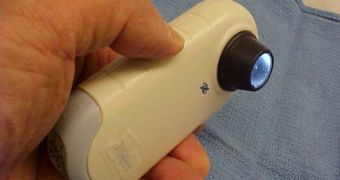Skin cancer is one of the most widespread forms of the disease, and it hits regardless of the age group, social status and other socio-economic factors. Its causes have not yet been precisely determined, but one of the main culprits for new cancer cases is the sun. Prolonged exposure to ultraviolet radiation can trigger dangerous mutations in skin cells, which, in turn, leads to the onset of the disease. However, two new studies have also shown the fact that the condition may be transmitted from parents to children, in an upsetting turn of events, Reuters reports.
One of the investigations has revealed that, if one identical twin has a melanoma, then his or her sibling is also at an increased risk of developing the condition. The study has also revealed that the correlation does not appear in the case of fraternal twins, where one's condition does not determine the other’s risk. The second research has shown that having one parent who suffers from non-melanoma skin cancer also increases the children's risk of developing the condition, regardless of whether they are twins or not.
These are the first papers to show this correlation, although numerous other investigations have also hinted at the causal link. The reason why it's so difficult to determine whether genetics has anything to do with the onset of the disease in children is the fact that the influence of genes and the environment cannot be properly separated and classified. At first glance, it may appear that a child has skin cancer because their mother has it, but they may have also developed it because they have been exposed since birth to the same risk factors as their parents (the same environment, the same food and lifestyle, etc.).
The second study, which was conducted by experts at the University of California in Los Angeles (UCLA), has demonstrated that the children also tend to develop various types of cancer, and not just the ones that their relatives have. The investigation, led by expert Dr. Shehnaz K. Hussain, was conducted using data collected from the Swedish Family-Cancer Database. Details of the two investigations appear in the September issue of the respected scientific Journal of Investigative Dermatology.

 14 DAY TRIAL //
14 DAY TRIAL //